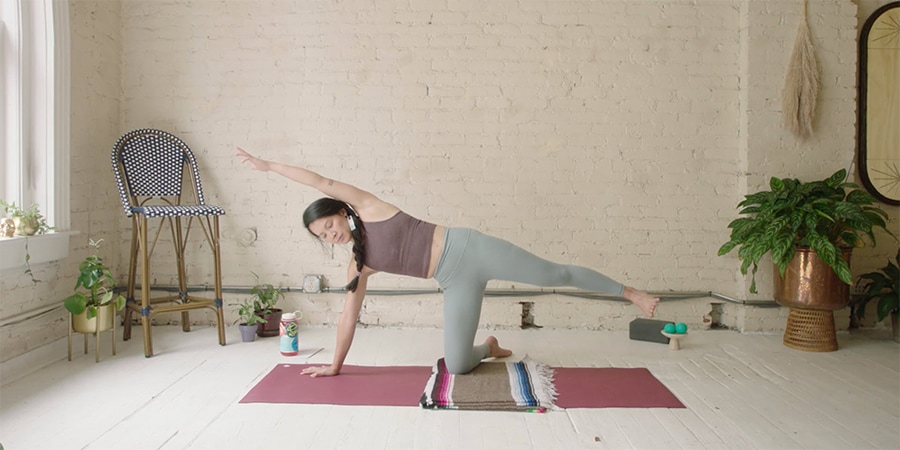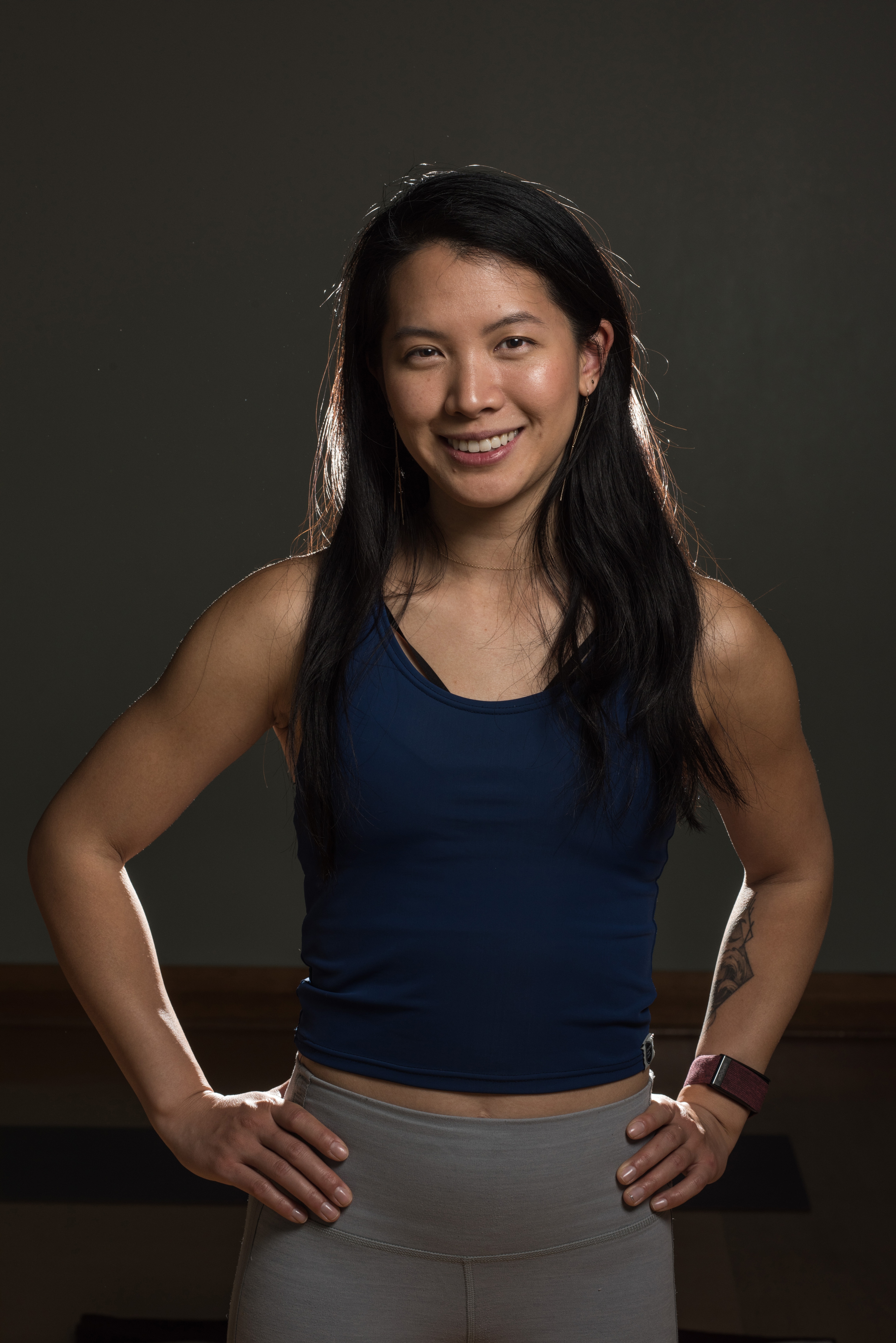Whether you're new to running or more advanced, a regular yoga practice can help you stretch and strengthen the muscles you use to propel you along the sidewalk or trail. Yoga has other advantages for runners, too, like teaching you to breathe more efficiently and improving your focus. In this article, we'll cover:
Video: Yoga for Runners
In this video, yoga instructor and movement specialist Elena Cheung guides you through a 20-minute practice geared toward runners and yoga practitioners of all levels. Hungry for more? Try the yoga poses below, or check out other videos in the Deeply Moving with Elena Cheung series on REI's YouTube channel. Need gear recommendations? Elena shares her favorite clothing, yoga props and other items for yoga and movement.
The Benefits of Yoga for Runners
Hear the word "yoga" and your mind probably jumps to the asanas, or the physical poses or postures. Yoga poses can help you build mobility and strength and recover from intense workouts. But the asanas are just one of the eight limbs of yoga. The other seven limbs include pranayama (focus on the breath), dharana (concentration) and others. (To learn more about those, read Yoga for Everyone - How to Get Started.)
Runners can benefit from many aspects of yoga, including:
Physical Poses (Asanas)
Yoga poses stretch and strengthen your muscles, while also helping quiet your mind for meditation. Yoga can also help you develop awareness of your body's orientation in space and with recovery, so the next time you lace up your shoes, you do so with a sense of renewed vitality. Read on to discover the physical benefits of yoga for runners.
Yoga helps improve mobility. Mobility is your joints' ability to move through their full range of motion, with control, during a run or other activity. Ideally, runners want good mobility in their hips, knees and ankles. Yoga invites you to stretch the muscles that support those joints, like hamstrings, glutes, quads and calves. With increased mobility, they can better support your joints to move freely on a run.
Yoga helps build strength. Yoga helps condition your stabilizing muscles that fire as a precursor to big movements like sprinting or charging uphill. In this way, it's an ideal form of cross-training for running. During yoga, you build strength and stability using your body weight. Poses that require you to stand, lunge and squat can help you develop strength in your lower body.
Yoga helps with balance and proprioception. Most yoga classes involve some degree of balance, whether you move from one pose to the next or hold a pose while standing on one leg. Balance and proprioception—your body's ability to sense its position as you move through space—can help runners navigate different terrain, from uneven sidewalks to rocky, rooty trails.
When you run, you mostly go in one direction (forward) through a series of repeated actions. In yoga, you move your body through several different planes of motion, all while noting where you are relative to the floor, the walls or the person practicing next to you. When you run, proprioception helps you move in a coordinated way and make subtle adjustments to avoid falls and missteps.
Yoga helps runners recover. On a rest day, your body replenishes its energy stores and repairs damaged tissues. This process helps build strength, which is why recovery is essential. A gentle yoga practice (look for classes labeled "slow flow" or "restorative") can help you relax your body and mind; intentional movement can also help send blood and oxygen to your muscles, which in turn aids recovery.
Stretching feels great, especially for runners with tight hamstrings and calves. But remember to listen to your body as you move through your practice, and don't adopt any poses that are painful. It's OK—in fact, some teachers say it's ideal—to practice yoga for five to 20 minutes following your run. You don't need a full hour to enjoy yoga's physical and mental benefits.
Breath Mastery (Pranayama)
Runners know the importance of breathing during a workout. The last thing you want when you're flying around the track is to be huffing and puffing. Pranayama, or the yogic practice of focusing on your breath, can help send oxygen to your muscles during workouts and soothe your nervous system during recovery.
We all breathe through our noses or mouths, or some combination of the two. Research shows that certain types of nasal breathing can boost runners' performance (read Tips for Breathing While Running to learn more). Yoga can help you tune into how you breathe so that you can move more intentionally through your workouts. It also teaches you to breathe smoothly in and out through your nose, which research demonstrates calms the nervous system. This deep breathing can help you keep your cool during a grueling run; it can also help you relax and unwind on recovery days.
Concentration (Dharana) and Meditation (Dhyana)
Ever get lost listening to the tap, tap, tap of your shoes hitting the pavement during a run and, somehow, a half-hour workout feels more like five minutes? If so, you've gotten a taste of what it feels like to quiet the mind for meditation.
Concentration, or dharana, is the precursor to meditation. Here's how to give it a try: Find a comfortable seat and choose a single point of focus for five to 10 minutes. You might concentrate on a physical object (like a vase of flowers), a mental image (like waves crashing on a beach) or your breath moving in and out. This practice will help you to quiet your mind; and when your mind is quiet, it's less reactive.
This technique can be a useful tool on runs. Adopting a single point of focus during a jog can help you slow your thoughts and become less impulsive. When your workout is especially tough, you might pause and notice yourself thinking, "This is really hard!" You might even get lost in the run and feel time fly by.
Key Yoga Poses for Runners
Low Lunge (Anjaneyasana)
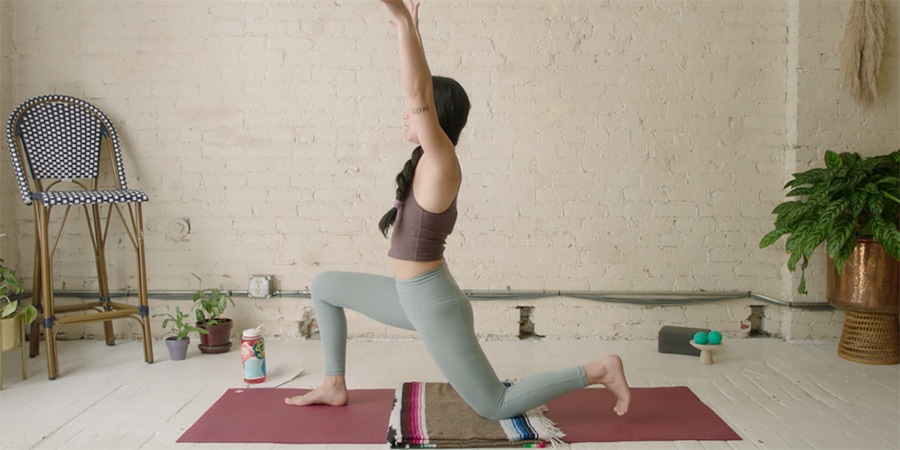
Benefit: A low lunge where your back knee rests on the floor behind you lets you mobilize and stretch your hips and legs. Many runners feel a release in the front hip of their back leg. Depending on how deep you go, this stretch also helps promote ankle mobility.
How to do it: Step one foot foward into a lunge. Your forward knee should be at a 90-degree angle to the ground. Your back knee should drop to the floor. Bring your arms overhead to challenge your balance and deepen the stretch. Hold the pose for five to eight breaths. Then switch legs and repeat.
Deep Squat (Malasana)
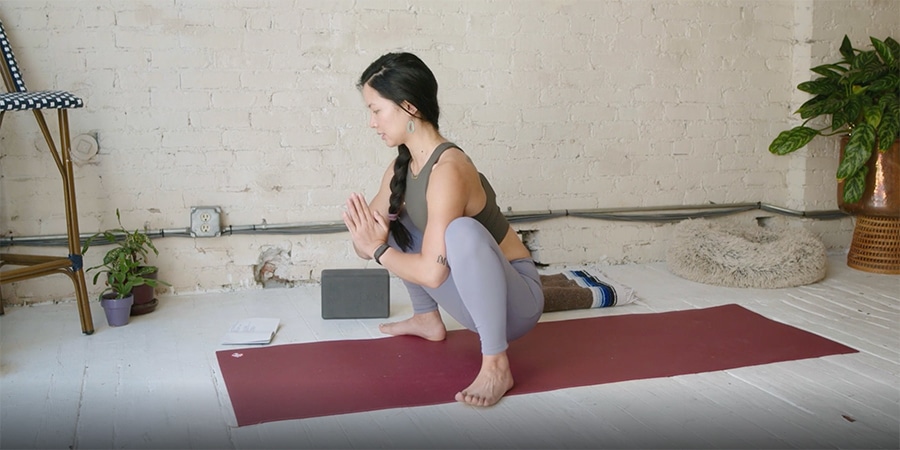
Benefit: A deep squat like malasana can help release tension in your inner thighs, glutes and ankles.
How to do it: Take a deep squat, allowing your butt to descend toward the floor between your ankles. Rest your hands on the floor, your thighs or in front of your heart, and try to maintain contact with the floor with your heels. If you're having trouble, place your butt on a yoga block or blanket to help you maintain proper form. Hold the pose for 10 breaths.
Half Pigeon Pose (Eka Pada Rajakapotasana)
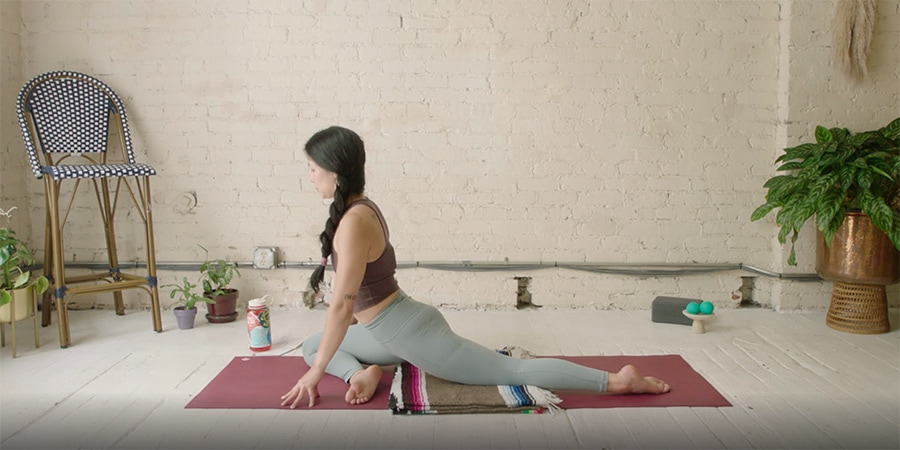
Benefit: Half Pigeon is a favorite pose among runners for the way it helps stretch the entire hip area.
How to do it: Start on your hands and knees in a tabletop position. From there, place your right knee on the floor behind your right hand and your right foot in front of your left hip. Extend your left leg long behind you. Your left hamstring should be facing the sky. Place your fingertips on either side of your front leg for support. Use your core and hip muscles and actively push down through your feet to stay upright as you relax into this deep hip stretch. Then switch legs and repeat.
How to Fit Yoga Into Your Running Routine
How often should runners practice yoga? There isn't a one-size-fits-all approach. In the beginning, set a reasonable goal like practicing once or twice per week for 10 to 20 minutes. Over time you may want to increase the time you spend on the mat.
Find a yoga class: It's hard to find classes labeled "yoga for runners." Classes titled "gentle," "restorative" or even "yoga for athletes" can work when you're just starting out. Remember, yoga should support your running—you shouldn't leave classes feeling exhausted (though a little muscle soreness afterward is OK).
Other helpful tips to get started:
- Practice yoga after you run or on a rest day.
- Consider where you are in your training cycle: Opt for a gentle class if you're in the midst of an intense training period. During the off-season, a more active or vigorous practice can be a great way to cross-train.
- Listen to your body when beginning or deepening a physical routine like yoga. Just like with running, you won't always want to practice. If you're feeling wiped out, or if a pose is painful, back off and rest. You can always return to your practice the following day.
- Experiment with more vigorous "vinyasa," "flow" or "power yoga" classes once you have a consistent yoga practice under your belt. Prioritize these more active classes on days when you aren't already pushing your body to the limit.
Related Articles
Remember: Safety is your responsibility. No online article or video can replace proper instruction and experience—this article is intended solely as supplemental information. Be sure you're practiced in proper techniques and safety requirements before you engage in any physical activity.
Article by Jess Bernhard. A former editor for REI's Uncommon Path and Expert Advice, Jess is a Seattle-based writer specializing in storytelling about women and the outdoors. When she's not writing, you can find her reading, running or chasing after her toddler. REI Co-op Member since 2009.
